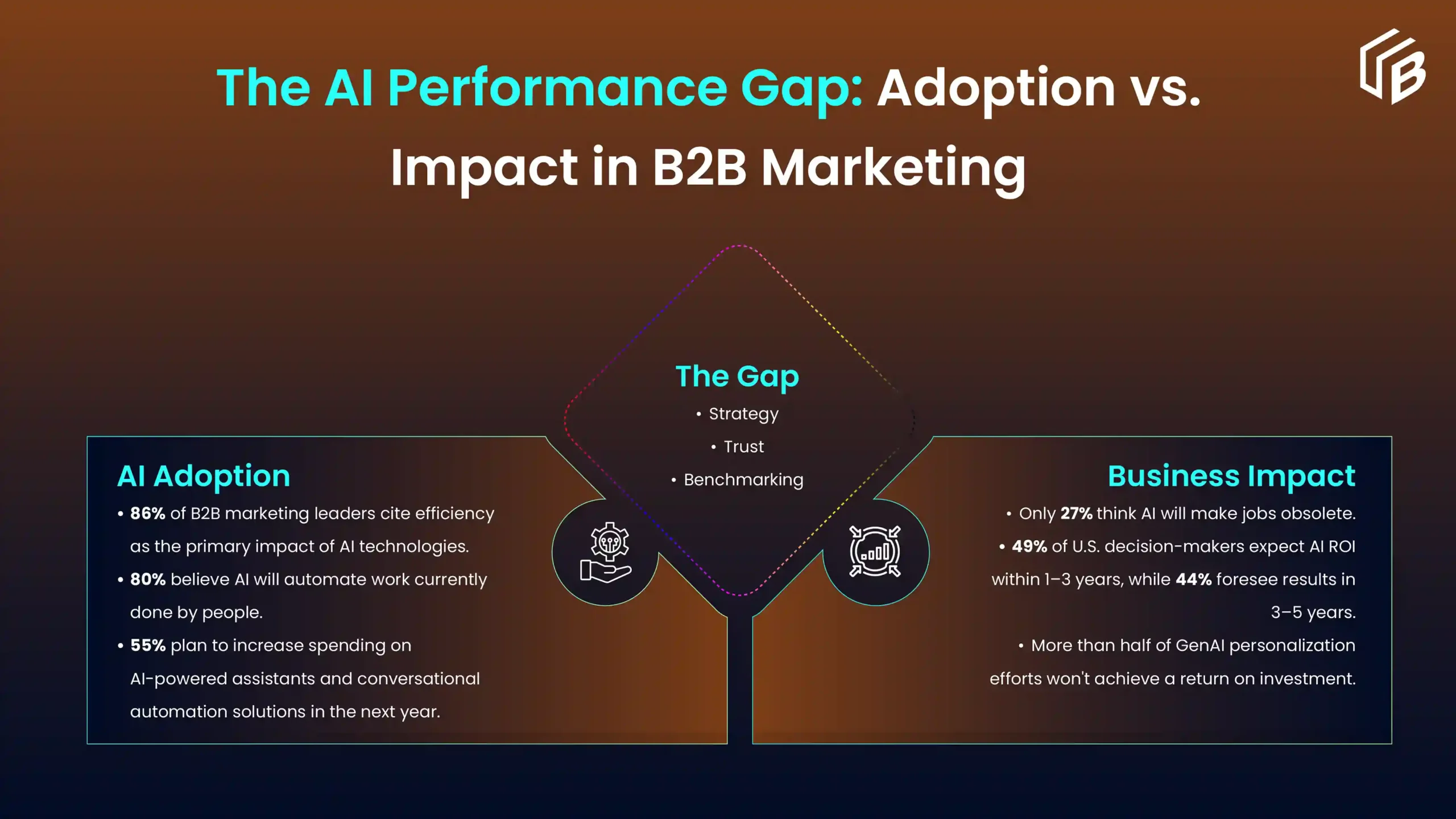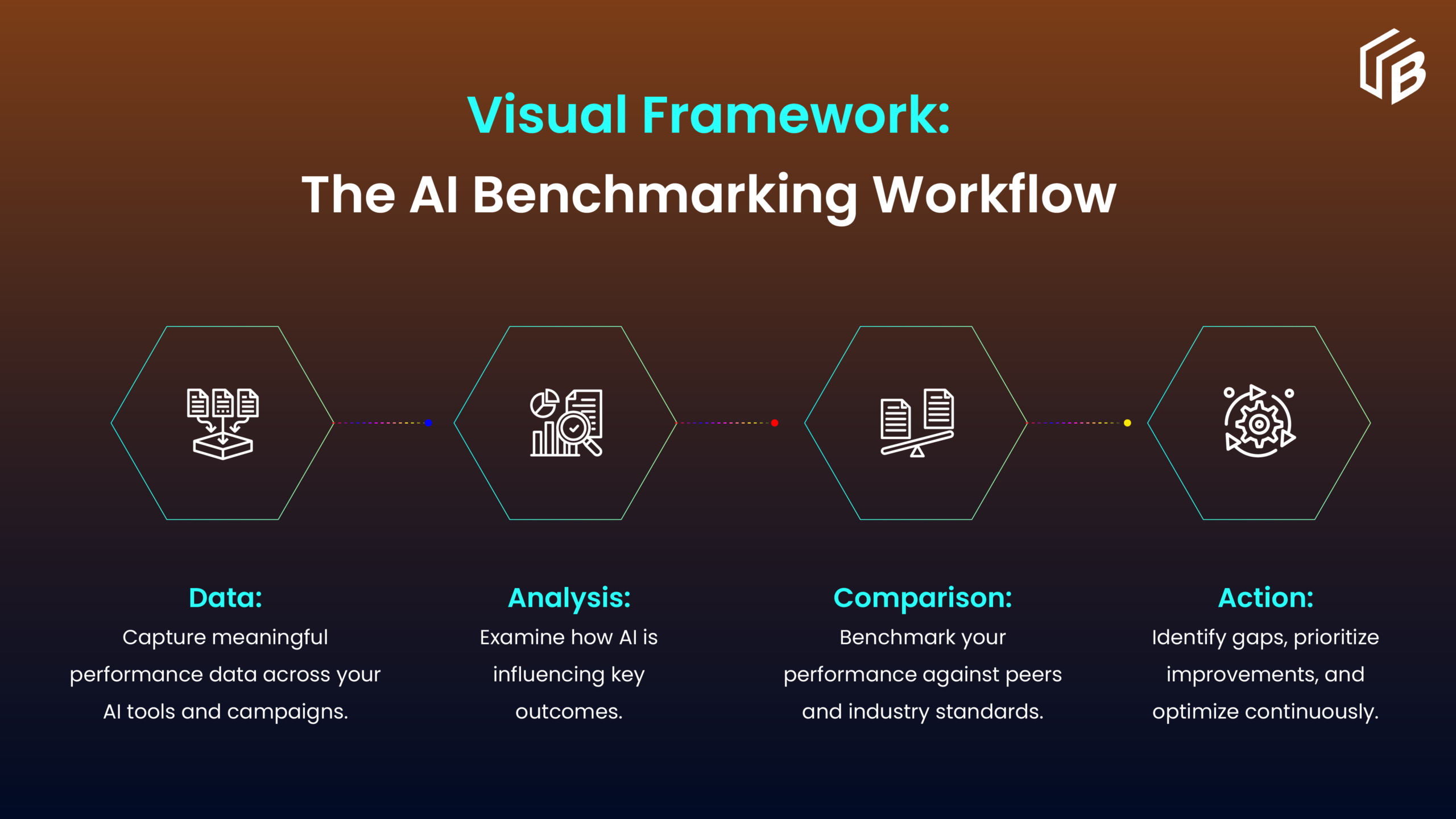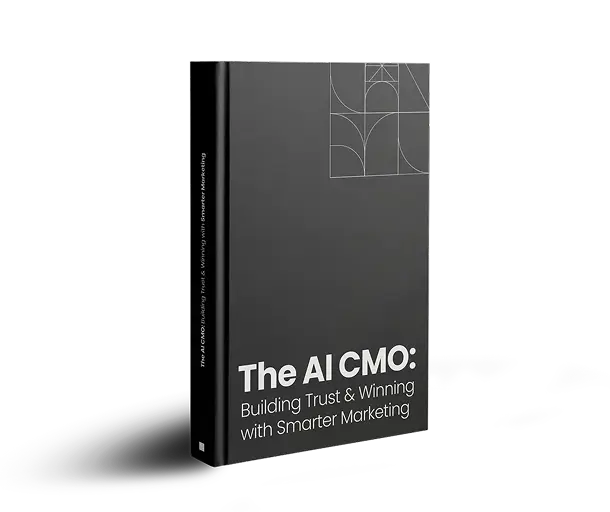
AI Competitive Benchmarking: What Leaders Are Doing & How to Stay Ahead
In this article
Introduction
The State of AI in B2B Marketing

What’s Working for AI in B2B Marketing
- AI Personalization at Scale: AI is enabling dynamic, real-time content delivery, from adaptive email flows to personalized website experiences which drive deeper engagement and better conversion rates.
- Predictive Insights: With better lead scoring, sales velocity forecasting, and buyer intent modeling, AI is helping marketers prioritize efforts and focus on high-impact opportunities.
- Workflow Automation: From campaign orchestration to CRM updates and reporting, AI is streamlining operations and freeing up time for strategic thinking.
What’s Not
- Incomplete or Inaccurate Data: Data silos remain the Achilles’ heel of many AI programs. Poor data quality undermines insights and hinders performance.
- Hallucinations and Misinformation: While generative AI shows promise, it’s still prone to inaccuracies, raising red flags around reliability and trust.
- Trust Deficit: Many AI tools act like black boxes, offering little visibility into how decisions are made. This lack of transparency can make teams hesitant to fully rely on AI insights.
What Top Performers Are Doing Right: Setting the AI Benchmark
HubSpot
- Seamlessly integrated AI-powered ABM with ABX capabilities directly into its CRM, making it native to the workflows of sales and marketing teams.
- Uses AI to surface account-level engagement patterns and recommend next best actions, enabling faster, more relevant outreach.
- Prioritizes transparency in AI outputs, helping teams understand how insights are generated which is a critical factor for adoption and alignment.
Drift
- Pioneered conversational AI that’s not just reactive but brand-aware, delivering relevant, real-time messaging that reflects a brand’s voice.
- Uses AI benchmarking tools to analyze conversion paths, A/B test chat flows, and continuously optimize user interactions.
- Built an internal feedback loop where insights from human sales reps retrain AI models, making the system smarter and more aligned with real buyer behavior.
UnboundB2B
- Uses AI to evaluate your brand’s current demand generation maturity across critical dimensions, then suggests personalized solutions to close gaps and scale growth.
- Functions as a smart diagnostic engine that aligns marketing and revenue teams around shared priorities, helping CMOs pinpoint exactly where advanced strategies should be deployed.
- Continuously evolves using real user data and GTM signals, ensuring recommendations stay relevant in the B2B landscape.
The takeaway for CMOs:
Where the B2B Market Is Still Falling Short
- Promise vs. Delivery: AI still underperforms when it comes to revenue attribution and managing complex buyer journeys. The potential is there, but the execution often falls short, especially when teams lack clear benchmarks for success.
- Integration of AI with ABM: One of the biggest gaps is the integration of AI with ABM strategies. Too often, AI tools function in isolation, making it difficult to scale personalization or coordinate across buying committees. For AI integration in account-based marketing to succeed, it must be deeply embedded into planning, orchestration, and measurement, not bolted on as an afterthought.
- Lack of Trust in AI Adoption: Many marketing teams still lack a governance framework that explains how AI makes decisions, what data it relies on, and how results are validated. This erodes trust in AI adoption, leaving teams hesitant to act on its recommendations.
Trust—The Missing Link in AI Adoption
Why Trust Matters
- Accuracy & Explainability: AI outputs must be auditable and understandable—not just predictive.
- Human-in-the-Loop Verification: Critical marketing decisions still require contextual judgment.
- Governance & Transparency: AI needs the same scrutiny as financial data or privacy practices.
UnboundB2B’s POV
The AI Benchmarking Process for CMOs
1. Identify Key Performance Areas
- Personalization Effectiveness: How well is your AI tailoring content, timing, and messaging to individual buyers?
- Lead Scoring Accuracy: Is your AI identifying real opportunities or just inflating your MQL count?
- Campaign Efficiency: Are AI-automated workflows improving speed to market and reducing manual lift?
- Engagement Lift from Predictive Recommendations: How much more engagement are you seeing from AI-driven insights?
2. Use a Competitive Benchmarking Tool
Benchmark your AI outcomes against market leaders and competitors. Tools like Crayon, Gong’s AI performance dashboards, or custom BI platforms can help you compare your performance across key areas. This isn’t about copying others, it’s about learning what “good” looks like in your industry.3. Assess Your AI Maturity
- Emerging (some business impact)
- Operationalized (embedded in workflows)
- Strategic (a core driver of growth)
4. Commit to Continuous Optimization

CMO Takeaway
How to Align AI with ABM to Win in 2025
Best Practices for AI-Driven ABM
- Predictive Account Scoring: Use AI models to prioritize accounts based on likelihood to convert based on intent and behavioral data.
- Real-Time Personalization: Dynamically adjust content, messaging, and channel mix based on live buying signals and engagement patterns.
- AI Benchmarking Tool: Implement an AI benchmarking tool to track performance, compare against best ABM programs, and identify optimization opportunities.
Common Pitfalls to Avoid
- Siloed AI Tools: Using disconnected solutions that don’t integrate with your ABM platform leads to inconsistent data and missed opportunities.
- Black-Box Models: Relying on AI models without transparency or human oversight can result in poor targeting and misalignment with GTM goals.
- No Measurement Frameworks: Without a clear AI benchmarking process, it’s impossible to measure success, optimize campaigns, or justify ROI.
Strategies for Righteous AI Implementation in B2B Marketing
What is Righteous AI?
Strategies to Get There:
- Human-in-the-Loop (HITL): Even with AI’s advanced capabilities, human oversight remains critical. Keeping marketers involved in sensitive decision-making ensures that AI systems don’t make unchecked decisions that could alienate customers or misalign with brand values. By maintaining a balance, you ensure human judgment guides the final outcomes.
- Explainable AI (XAI): To build trust, AI models must be transparent in their decision-making process. Prioritize systems that allow stakeholders to understand how and why a decision was made. XAI gives clarity to AI’s outputs, making it easier to trust and manage, particularly in regulated industries where accountability is key.
- Bias Auditing: Bias in AI algorithms can lead to unfair or discriminatory outcomes. By using diverse training data and actively testing algorithms for fairness, you can minimize bias and ensure that your AI tools work for everyone. Regular bias audits help identify and address any discrepancies that could harm your brand reputation.
- Consent-First Data Practices: Privacy laws, like GDPR, are pushing companies to rethink how they collect and use customer data. Adopting consent-first practices ensures that customers’ data is used responsibly. Beyond legal compliance, this builds stronger relationships with customers, demonstrating a commitment to protecting their privacy and being transparent about data use.
- Cross-Functional Governance: AI decisions shouldn’t be made in a vacuum. It’s essential to involve teams from legal, compliance, product, and brand to ensure AI systems align with organizational goals and standards. Cross-functional governance ensures that ethical concerns, regulatory requirements, and brand values are woven into every AI implementation decision.
Why It Matters in B2B Market
Your AI Competitive Benchmarking Checklist
- Are you benchmarking AI performance across key revenue metrics?
- Is trust a defined KPI in your AI roadmap?
- Is AI fully integrated into your ABM workflows?
- Do you have human oversight to cross-verify AI outputs?
Conclusion: Leading with Confidence and Clarity
What’s Holding Your Team Back from Engaging the Right Leads?
Be a part of 1000+ successful clients that have chosen UnboundB2B for growth.
Discover more resources

Successful B2B Lead Generation requires generating Marketing Qualified Leads. In this article, we have discussed how to identify MQLs and 10 practical tips to generate more MQLs. These tips cover essential strategies from optimizing your sales funnel to leveraging engaging videos and interactive content. You'll learn about the importance of strong calls-to-action, utilizing chatbots, and implementing Account-Based Marketing. We'll explore how a Customer Data Platform can improve your targeting and lead-generation efforts. By implementing these strategies, you can significantly improve your MQL generation and boost your B2B growth.

Demand for SaaS products and services has increased significantly in recent years. By making cloud-based software solutions more accessible, SaaS companies bring technology closer to modern businesses. The increased demand has resulted in a highly competitive SaaS environment. One effective strategy companies can use to stay ahead of the competition is SaaS advertising. Read on to discover how ad platforms facilitate SaaS advertising and find out which advertising platforms your company can leverage to succeed in sales.







